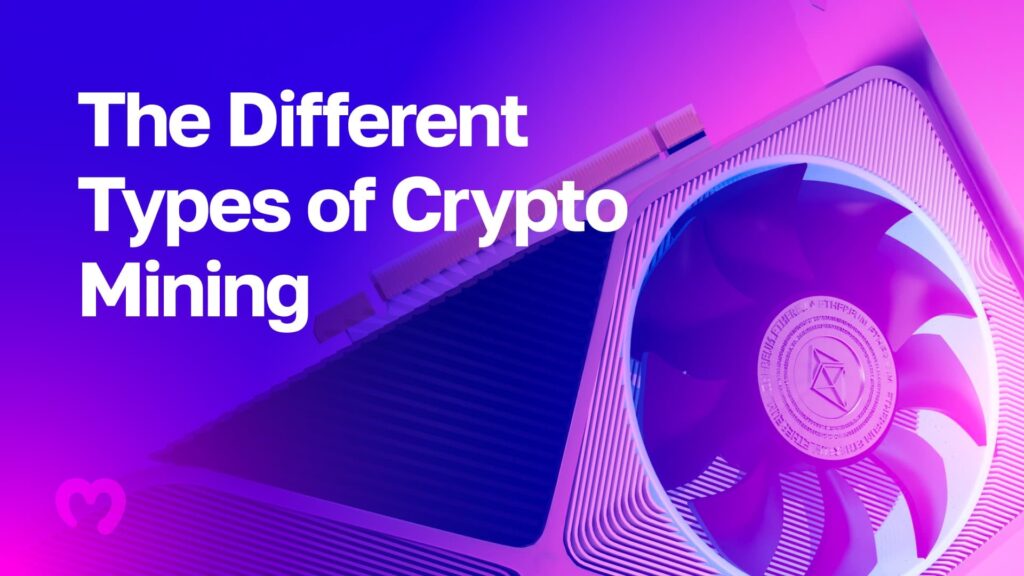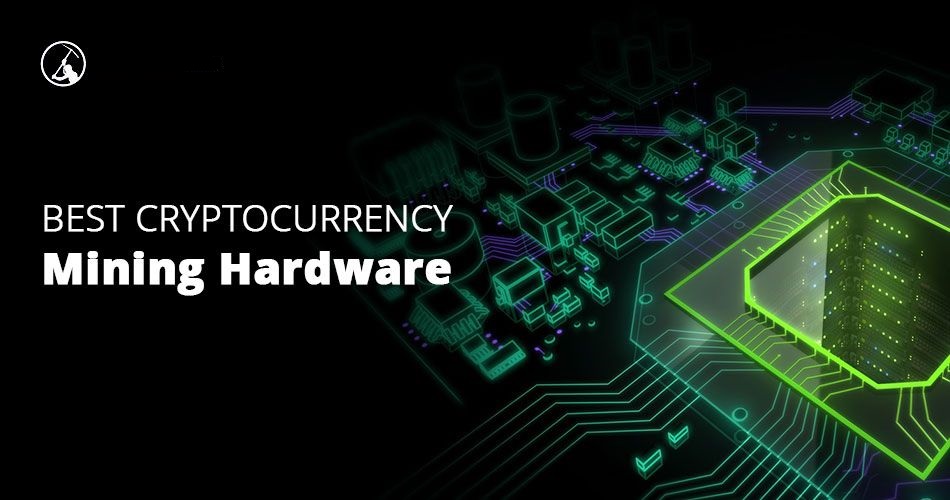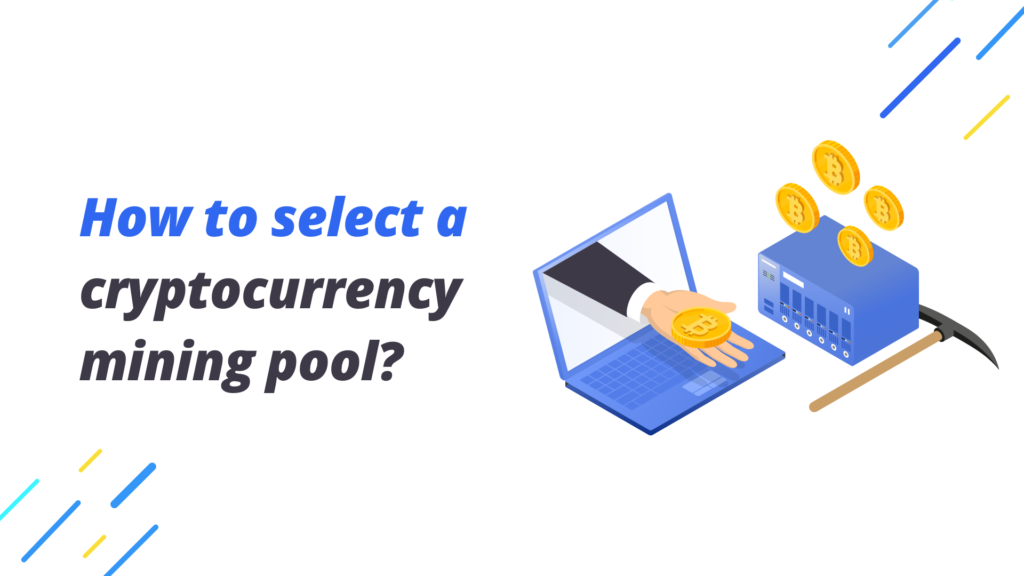Cryptocurrency mining is the process of validating transactions and creating new blocks in the blockchain. Miners use specialized hardware and software to solve complex mathematical problems and verify transaction data. In exchange for contributing computing power, miners are rewarded with newly minted cryptocurrency. Cryptocurrency mining has grown from a niche hobby to a big business, driving innovation in hardware and shaping the growth of blockchain networks like Bitcoin and Ethereum.
What is Cryptocurrency Mining?
Cryptocurrency mining is the process by which new units of cryptocurrency are created and transactions are verified and added to the blockchain ledger.
How Cryptocurrency Mining Works

In blockchain networks like Bitcoin and Ethereum that use proof-of-work consensus algorithms, mining involves competing with other miners to solve complex mathematical problems that validate groups of transactions called blocks. The first miner to solve the problem and validate the block receives a reward in the form of native cryptocurrency tokens.
- Miners install dedicated hardware and software to monitor the network and collect pending transactions
- Mining software assembles this data into blocks and generates hashes, or mathematical puzzles, based on cryptographic algorithms
- Miners work to solve these hashes using computational power from their hardware
- The first miner to successfully solve a hash and validate a block is rewarded with cryptocurrency
- The validated block is then added to the blockchain and the miner’s reward is recorded in the ledger
- The process repeats approximately every 10 minutes for Bitcoin and 12 seconds for Ethereum
This competitive process secures the network and prevents fraud, as well as distributes new cryptocurrency as miners are rewarded for their work. The difficulty of the mathematical problems is designed to increase over time, keeping block validation times steady as more miners join the network.
Proof-of-Work vs. Proof-of-Stake
The two main consensus algorithms used in cryptocurrency mining are proof-of-work (PoW) and proof-of-stake (PoS).
- Proof-of-work – Miners compete to solve mathematical problems using computational power. Used by Bitcoin, Ethereum (for now), and others.
- Proof-of-stake – Miners validate transactions based on how many coins they hold. Doesn’t require expensive hardware. Used by Ethereum 2.0, Cardano, Solana.
Solo Mining vs Pool Mining
There are two approaches to cryptocurrency mining:
- Solo mining involves miners using their own hardware to mine coins independently. This requires a significant investment in equipment and electricity. The upside is that the miner keeps 100% of rewards.
- Pool mining involves multiple miners sharing processing power over a network to split rewards equally. This allows miners to share risks and rewards. Most miners participate in mining pools given the lower barriers to entry.
Step by Step to Start Cryptocurrency Mining?

Cryptocurrency mining is a complex process that can be broken down into several general steps:
1. Install Mining Hardware
Miners install purpose-built hardware designed specifically for mining cryptocurrency. Common examples:
- ASIC miners – Application-Specific Integrated Circuits that solve algorithms much faster than normal computer processors. Used to mine Bitcoin.
- GPU miners – Graphics Processing Units designed for rapid visual processing. Repurposed to compute math problems quickly. Used to mine Ethereum.
- FPGA miners – Field Programmable Gate Array miners can be programmed after manufacturing. Fast and efficient for mining.
2. Install Mining Software
In addition to hardware, cryptocurrency miners need dedicated software:
- Node software runs in the background and connects miners to the blockchain network.
- Mining software interfaces with the mining hardware and pools to receive work, distribute hardware power, and collect rewards.
- Popular mining software includes CGMiner, BFGminer, and EasyMiner.
3. Join a Mining Pool
To smooth out reward payments, miners often join a mining pool to share processing power and split earnings:
- The mining pool operator aggregates power from members to mine coins at scale.
- Rewards are distributed to pool miners based on the amount of work done, minus a small fee for the pool operator.
- Larger pools typically find blocks more often, yielding smaller but more frequent payouts.
4. Start Mining
Once setup is complete, miners can begin the mining process:
- Using mining software, miners direct their hashing power to the mining pool.
- The pool operator assigns work based on processing power contributed.
- Miners immediately begin generating valid hashes and sharing with the network.
- If a miner in a pool successfully validates a block, the reward is shared among members.
5. Trade or Hold Mined Coins
When miners receive payouts in their cryptocurrency of choice, they have two options:
- Trade coins for fiat currencies like USD or other cryptocurrencies on exchanges like Coinbase.
- Hold coins long-term if they believe value will increase over time.
Is Cryptocurrency Mining Profitable?
Cryptocurrency mining can be a profitable venture depending on these key factors:
Cryptocurrency Price
The most critical factor for mining profitability is the price of the cryptocurrency being mined. For example, a surge in the price of Ethereum can boost profit margins for ETH miners.
Mining Difficulty
As more miners contribute hashpower to a network, the mining difficulty increases. Higher difficulty requires more computations, raising hardware energy consumption costs.
Cost of Electricity
The energy-intensive mining process incurs high electricity costs for miners over time. Access to renewable, low-cost energy sources can improve profitability.
Mining Hardware Efficiency
More efficient cryptocurrency mining hardware that generates more hashes per watt of power used can help improve profitability for miners.
For most individual cryptocurrency miners, operating at a small scale, mining will cost more in electricity and hardware than it generates in cryptocurrency rewards. However, it can still be profitable at a large scale, especially for companies able to secure discounted utility rates.
Types of Cryptocurrency Mining

There are several key types of cryptocurrency mining that miners engage in:
Bitcoin Mining
The most well-known cryptocurrency, Bitcoin, is mined using the SHA-256 hashing algorithm. Miners compete using custom hardware like the Antminer S19 Pro to solve math problems and validate transactions on the Bitcoin blockchain. Rewards are paid out in BTC.
Ethereum Mining
Ethereum currently relies on a proof-of-work consensus and mining like Bitcoin, but is in the process of transitioning to proof-of-stake consensus with Ethereum 2.0. Miners use graphics cards like the NVIDIA RTX 3090 to mine Ethereum using the Dagger-Hashimoto algorithm and are rewarded in ETH.
Litecoin Mining
Litecoin is a peer-to-peer digital currency that can be efficiently mined with consumer-grade hardware. Litecoin mining uses the Scrypt algorithm and miners are paid in LTC for validating transactions on the Litecoin blockchain.
Monero Mining
Monero is an open-source cryptocurrency focused on privacy and untraceability of transactions. Monero mining uses the RandomX algorithm and miners help obscure transfer information using regular computer processors, rewarded with XMR tokens.
Dogecoin Mining
The meme-inspired cryptocurrency Dogecoin can be mined using Scrypt ASIC miners. Miners validate Dogecoin transactions in DOGE rewards, however block rewards are intentionally kept low to limit mining incentive.
Zcash Mining
Zcash utilizes zk-SNARK proofs to enable anonymous blockchain transactions. Zcash mining uses ASICs and GPUs with the Equihash algorithm and miners receive ZEC for validating privacy-focused transactions.
Best Cryptocurrency Mining Software

Cryptocurrency miners have access to various software tools and programs:
CGMiner
CGMiner is an open-source command-line mining software for ASIC and GPU miners. It supports both solo and pool mining and is compatible with multiple algorithms. CGMiner provides in-depth monitoring, clocking, and remote interface capabilities.
EasyMiner
EasyMiner is a GUI-based beginner-friendly mining software that lets users easily monitor mining status and manage multiple miners. EasyMiner is compatible with both ASIC and GPU hardware as well as with mining pools like MiningRigRentals.
Cudo Miner
Cudo Miner is a user-friendly auto-mining app with a simple interface. It automatically benchmarks hardware and scans for most profitable coins to mine based on hardware specs and electricity costs. Cudo Miner works with ASIC, GPU, and CPU mining.
TeamRedMiner
TeamRedMiner is an optimized mining software for AMD GPUs. It supports mining of coins based on Nvidia, Epoch, Kawpow, Cuckatoo, and ProgPow algorithms. TeamRedMiner offers performance tuning for different cards to maximize mining income.
BetterHash
BetterHash is a unique mining program from Nvidia that optimizes GPUs specifically for mining Ethereum. It enables GPUs to take on more useful hashing work using optimized pipelines and memory allocation to increase mining earnings.
Cryptocurrency Mining Hardware

Specialized mining hardware designed for the sole purpose of mining cryptocurrency has fueled industrial-scale mining operations:
ASIC Miners
Application-Specific Integrated Circuit (ASIC) miners are hardware systems custom-built specifically to mine cryptocurrency efficiently. Popular ASIC models include:
- Antminer S19 Pro – Mines Bitcoin at 110 TH/s while consuming 3,250 Watts.
- Antminer S19 XP – Mines Bitcoin with up to 140 TH/s and a power efficiency of around 30 watts per TH.
- AvalonMiner 1246 – Mines at 90 TH/s with a power efficiency of 37 watts per TH.
GPU Miners
Graphics Processing Units (GPUs) originally designed for video gaming have been repurposed to mine cryptocurrencies efficiently:
- NVIDIA CMP HX – Professional crypto mining GPU capable of mining Ethereum at 46 MH/s while consuming 125 watts.
- AMD Radeon RX 6800 XT – Top gaming GPU from AMD offering a hashrate of 62 MH/s mining Ethereum with 230 watts of power.
- NVIDIA RTX 3090 – Flagship consumer GPU from NVIDIA that can reach 121 MH/s for Ethereum mining.
FPGA Miners
A Field Programmable Gate Array (FPGA) miner is an integrated circuit designed to be customized and optimized for mining specific cryptocurrencies:
- BTU Mini – Mines Bitcoin and Litecoin using dual Spartan FPGA chips delivering 12 TH/s at 1200 watts.
- KR1 Fractal – Mines Bitcoin and other SHA-256 coins efficiently using an FPGA chip cooled by a built-in fan.
- Pangolin Whatsminer M31S+ – Mines ETH at 218 MH/s using a powerful FPGA chip with optimizing capabilities.
Cryptocurrency Mining Pools

Instead of solo mining, most miners join a pool to combine resources and share mining rewards:
AntPool
- Owned and operated by Bitmain, AntPool is the largest Bitcoin mining pool controlling over 25% of hashpower.
- Mines blocks on the Bitcoin, Litecoin, and Ethereum networks using ASIC, GPU, and FPGA hardware.
- Rewards are shared among miners proportionally based on work done minus fees.
Ethermine
- Popular Ethereum mining pool that accounts for over 20% share of the Ethereum network hashrate.
- Uses the PPLNS reward system to pay out miners in ETH every 24 hours if min. payout is met.
- Mines Ethereum Classic in addition to Ethereum using GPU rigs compatible with Ethash algorithm.
Slush Pool
- Slush Pool is one of the oldest mining pools launched in 2010, now miner over 7% of all Bitcoin blocks.
- Uses a transparent SCORE methodology that rewards miners based on the shares submitted over time.
- Allows users to both solo mine or join the pool to maximize profits and minimize risks.
F2Pool
- F2Pool is a major Chinese Bitcoin mining pool running since 2013 with a global user base.
- Mines not only Bitcoin but also Litecoin, Ethereum, Zcash, Monero, Dash, Bitcoin Cash, and multiple other coins.
- Features a native mobile app so miners can monitor their workers at all times.
Cryptocurrency Mining Calculators
To estimate projected mining profits based on factors like hardware, electricity costs, and pool fees, miners can utilize mining profitability calculators:
Whattomine
- Popular calculator covering major GPU/ASIC mineable coins like Ethereum, Bitcoin, Ravencoin, etc.
- Input mining hardware specs, cost of electricity, pool fees to estimate revenues in USD and BTC.
- Provides a snapshot of estimated mining profitability to guide hardware investments.
Cryptocompare
- Cryptocompare mining calculator includes Bitcoin, Ethereum, Litecoin, Monero, and Zcash.
- Allows input of actual hashrates from mining hardware instead of models.
- Calculates daily, monthly, and annual profits in USD based on costs.
NiceHash Profitability Calculator
- Designed for NiceHash’s cloud mining and hashpower marketplace model.
- Input mining hardware information to see potential NiceHash profitability.
- Also provides profitability comparisons across different hardware types.
ASIC Miner Value
- Specialized calculator focused specifically on ASIC miners.
- Finds most profitable coins to mine based on miner model, network hashrate, power costs.
- Helps miners maximize their ASIC investment by mining the optimal cryptocurrency.
Major Cryptocurrency Mining Companies
Large companies now operate industrial-scale mining farms and pools:
Bitmain
- Leading ASIC hardware manufacturer also runs Antpool and BTC.com mining pools.
- Operates mining facilities in China, the U.S, and Canada among other locations.
- Rakes in over $1 billion in profit mining Bitcoin and other cryptocurrencies annually.
Bitfarms
- Canadian publicly-traded Bitcoin mining company with five industrial-scale facilities.
- Mines over 10 BTC daily using renewable hydroelectric power keeping costs low.
- Developing a 210 MW Bitcoin mining site in Argentina powered entirely by renewable energy.
Riot Blockchain
- Nasdaq-listed cryptocurrency mining company focusing primarily on mining Bitcoin.
- Operates a 200 MW mining facility in Texas hosting over 37,000 Antminer ASICs.
- Plans to increase hashrate to 12.8 EH/s in the near future as it expands operations.
How to Mine Cryptocurrency on a Phone

While less powerful and efficient than ASICs and GPUs, cryptocurrency can be mined on a phone:
Install a Mobile Mining App
There are a few mobile apps like Phoneum, Crypto Miner, and AA Miner that mine cryptocurrency using a phone’s CPU/GPU. Rewards are sent to the app’s wallet.
Join a Mobile Mining Pool
Join a mobile mining pool like Kryptex or Cudo Miner that distributes mining work and profits to members based on device computing power.
Enable Background Mining
Enable background mining in the app settings to allow mining when the phone screen is locked or using other apps.
Monitor Phone Temperature
Check phone temperature periodically as mining can heat up the device. Consider mobile cooling accessories to prevent overheating.
Only Mine When Plugged In
To avoid draining battery which reduces lifespan, only mine when the phone is plugged in and charging. Don’t mine on battery power alone.
How to Build a Cryptocurrency Mining Rig

A mining rig is a custom-built computer system designed specifically for mining cryptocurrency efficiently. Here is how to assemble your own:
Choose Your Components
Pick a mining motherboard, CPU, RAM, SSD, and most importantly, graphics cards like the NVIDIA RTX 3080 or AMD RX 6700 XT. The more GPUs, the better.
Install GPU Risers
Use PCIe risers to install GPUs vertically spaced apart to prevent overheating issues when multiple GPUs run in close proximity.
Setup Adequate Cooling
Proper cooling is a must when GPUs run under heavy mining loads. Install fans and open-air frames to keep GPUs at optimal temperatures.
Connect Power Supply
High-quality power supplies (1200+ watt) with multiple PCIe power cables are needed to provide stable energy for maximum GPU performance.
Configure Software
Install Linux-based mining OS and programs like TeamRedMiner. Configure overclocks to optimize mining hashrate.
Join Pool & Start Mining
Create pool account and input worker details into software to connect rig and start earning cryptocurrency.
Cryptocurrency Mining Profitability
When assessing the current profitability of cryptocurrency mining, there are several factors to consider:
Hashprice
The hashprice – mining profitability denominated in USD per TH/s – for networks like Ethereum and Bitcoin fluctuates daily based on difficulty, rewards, and price.
Mining Difficulty
Increasing network difficulty increases the amount of computational work required to mine coins. Periodic difficulty adjustments make mining less profitable over time.
Mining Rewards
The mining block rewards for cryptos like Bitcoin halve periodically, reducing the incentive for miners to continue participating.
Electricity Costs
The real ongoing cost of mining is electricity, especially in areas where utility rates are high. Cheap renewable power boosts profit margins.
Hardware Efficiency
Outdated mining hardware becomes unprofitable as newer more efficient models can generate greater profits with the same electricity input costs.
The Future of Cryptocurrency Mining
Here are some potential developments that could Here are some potential developments that could impact the future of cryptocurrency mining:
Transition to Proof-of-Stake
Networks like Ethereum plan to move from proof-of-work mining to proof-of-stake validator models like Casper POS where coins are staked instead of mining rigs used. This would eliminate the need for power-hungry computational mining.
ASIC-Resistant Coins
Newer cryptocurrencies are adopting hashing algorithms like RandomX and ProgPoW that are ASIC-resistant, favoring GPU mining. This could level the playing field for average miners.
Renewable Energy Mining
More mining companies are turning to solar, wind, hydro and other renewable energy sources to power operations and reduce costs. This supports network decentralization.
Government Regulation
Increased government oversight and potential mining bans and restrictions – especially regarding high energy use – could have a large impact on mining viability and location.
New Consensus Models
As blockchain technology evolves, new consensus models like proof-of-space and useful proof-of-work may emerge that optimize incentives and efficiency of mining.
Commodity Hardware Mining
Some newer cryptocurrencies can be mined profitably using just commodity CPU and GPU hardware, moving away from expensive specialized ASICs dominating hashpower.
Mainstream Adoption
Wider mainstream business and consumer cryptocurrency adoption could drive appreciation in crypto valuations and mining rewards, boosting profitability.
Is Cryptocurrency Mining Legal?
The legality of cryptocurrency mining varies by country and jurisdiction. In most countries, mining is legal as long as it follows local laws and regulations. However, some countries have banned or restricted mining due to concerns about energy consumption and potential illegal activities.
For example, China has cracked down on cryptocurrency mining in recent years, citing environmental concerns and the use of mining for illegal activities like money laundering. In contrast, countries like Canada and Iceland have become popular locations for mining operations due to their cheap renewable energy sources.
It is important for miners to research and understand the laws and regulations surrounding cryptocurrency mining in their specific location to ensure they are operating legally.
Conclusion – Cryptocurrency Mining
Cryptocurrency mining plays a crucial role in maintaining the security and integrity of blockchain networks while also providing an opportunity for individuals and companies to earn cryptocurrency. With the rise of specialized hardware and large mining companies, mining has become more competitive and challenging for individual miners. However, with the right equipment, knowledge, and understanding of profitability factors, mining can still be a profitable venture. As the industry continues to evolve and new technologies emerge, the future of cryptocurrency mining remains uncertain but full of potential.

